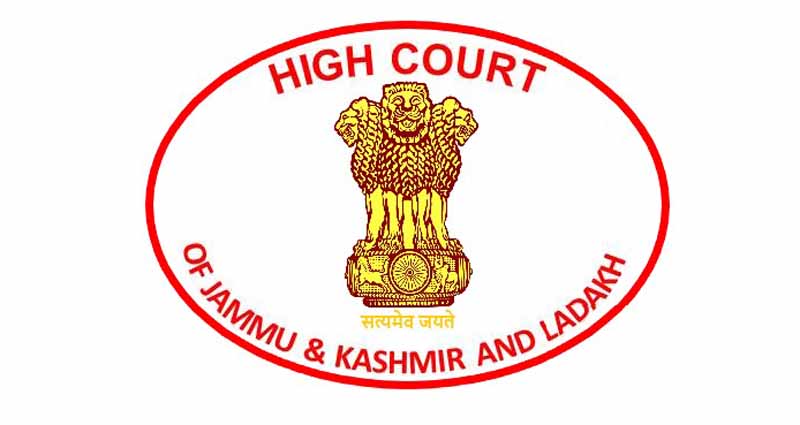Initiating measures for flood management in Kashmir
*Says CAG reveals irregularities in utilization of GoI funds
Mohinder Verma
JAMMU, June 10: Expressing disappointment over phlegmatic response of the authorities towards numerous directions issued from time to time about initiating necessary steps to prevent September 2014 like devastating floods in Kashmir valley, a Division Bench of High Court of Jammu & Kashmir and Ladakh comprising Chief Justice N Kotiswar Singh and Justice Wasim Sadiq Nargal has issued fresh directives to the UT of J&K and has made it clear that if the needful is not done within three weeks the court would be constrained to take coercive steps against concerned authorities.
Click here to connect with us on WhatsApp
The directions include submission of Utilization Certificates in respect of amount to the tune of Rs 41323.17 lakh released by the Union of India for flood management, latest compliance of the orders whereby Deputy Commissioners were asked to ensure that no construction of any kind is raised near the water bodies within their territorial jurisdiction and what preventive measures the Government has taken in order to deal with the precarious issue of floods in Kashmir in view of impending monsoon season etc.
The DB was hearing Public Interest Litigations (PILs), which call for court’s attention to avert/prevent a similarly devastating flood, which occurred in the valley of Kashmir around Jhelum River in the month of September 2014. From time to time, the Division Bench passed a number of directions highlighting the need for an immediate requirement of the demarcation of Wildlife Forests, Wildlife Sanctuaries, National Parks, Conservation Reserves and Wetland Reserves as concomitant steps towards the main aim of preventing floods.
Some of the other key directions issued by the DB on numerous occasions were about re-establishing the network between the Jhelum, streams, wetlands and lakes and ensuring that no construction of any kind is raised near the water bodies and removal of encroachments.
After hearing counsels for the petitioners, Amicus Curiae and counsels for the respondents, the DB observed, “the conspectus of the orders passed by this court from time to time would reveal that the respondents have not truly appreciated the seriousness of the issues involved in these PILs, as is apparent from the perusal of various compliance reports submitted by them”.
“Amicus Curiae has drawn our attention to the order passed on 18.08.2017, whereby, this court directed the concerned authorities to immediately carry out demarcation of the National Parks, Wildlife Sanctuaries, Conservation Reserves and the Wetland Reserves. The Amicus Curiae has submitted that Kazinag National Park located in Uri, Baramulla district along with two Wildlife Sanctuaries namely Limber Wildlife Sanctuary and Lachipora Wildlife Sanctuary as well as Naganari Conservation Reserve seem to have been, inadvertently, left out in the status report submitted by the Principal Chief Conservator of Forests, which would also require proper demarcation”, the DB said.
“It is further submitted by the Amicus Curiae that in spite of the order passed by this court on 18.08.2017, nothing apparent has been done for demarcation of these locations”, the DB said while directing the UT of J&K to file an affidavit by or before the next date of hearing regarding the steps taken for demarcation as directed on 18.08.2017 along with the additional locations.
“What is of prime importance for this court is to prevent the possibility of recurrence of such a devastating flood, which had occurred in September 2014 for which a number of directions have been issued including directions issued on 18.08.2017 and 11.09.2017. This court, vide order dated 9.10.2017 reminded the authorities that the court is not powerless in matters involving public interest. It was further observed that this court is sufficiently empowered to take such action which would constrain the authorities to follow the dictates of law”, the DB said.
“It has been brought to our notice that Government of India had actually disbursed a sum of Rs 399.29 crore for flood management. From the perusal of the status report submitted by the Union of India on 13.01.2022, it is apparent that the Government of India has released funds of Rs 4,1323.17 lakh towards various projects. The status report also states that Government of India has not received utilization certificates for the amount till 2021”, the DB noted, adding “it has also been brought to our notice that Comptroller and Auditor General of India (CAG) report though not part of these pleadings has indicated that there have been serious financial irregularities”.
Accordingly, the DB has directed that respondents shall file a detailed affidavit detailing what steps they have taken in terms of the orders passed from time to time and UT of Jammu and Kashmir shall furnish utilization certificates in respect of the amount to the tune of Rs 4,1323.17 lakh released by Union of India for various projects.
“Latest compliance report be filed in terms of order dated 10.06.2016 in which this court, inter alia, directed all the concerned Deputy Commissioners to ensure that no construction of any kind is raised near the water bodies within their territorial jurisdiction, which shall also include details in tabulated form qua the encroachments removed on the River Jhelum”, the DB further directed, adding “the UT of J&K is further directed to state by way of filing Action Taken Report detailing therein what preventive measures they have taken and are also envisaging in order to deal with the precarious issue of floods in Kashmir, in view of impending monsoon season”.
The respondent-UT of J&K has further been directed to file an affidavit by or before the next date of hearing regarding the steps taken for demarcation. “Keeping in view the sensitivity attached to the issues, it is made clear that if the needful is not done within the stipulated time period, this court, in that eventuality, would be constrained to take coercive steps against the respondents”, the DB added.


